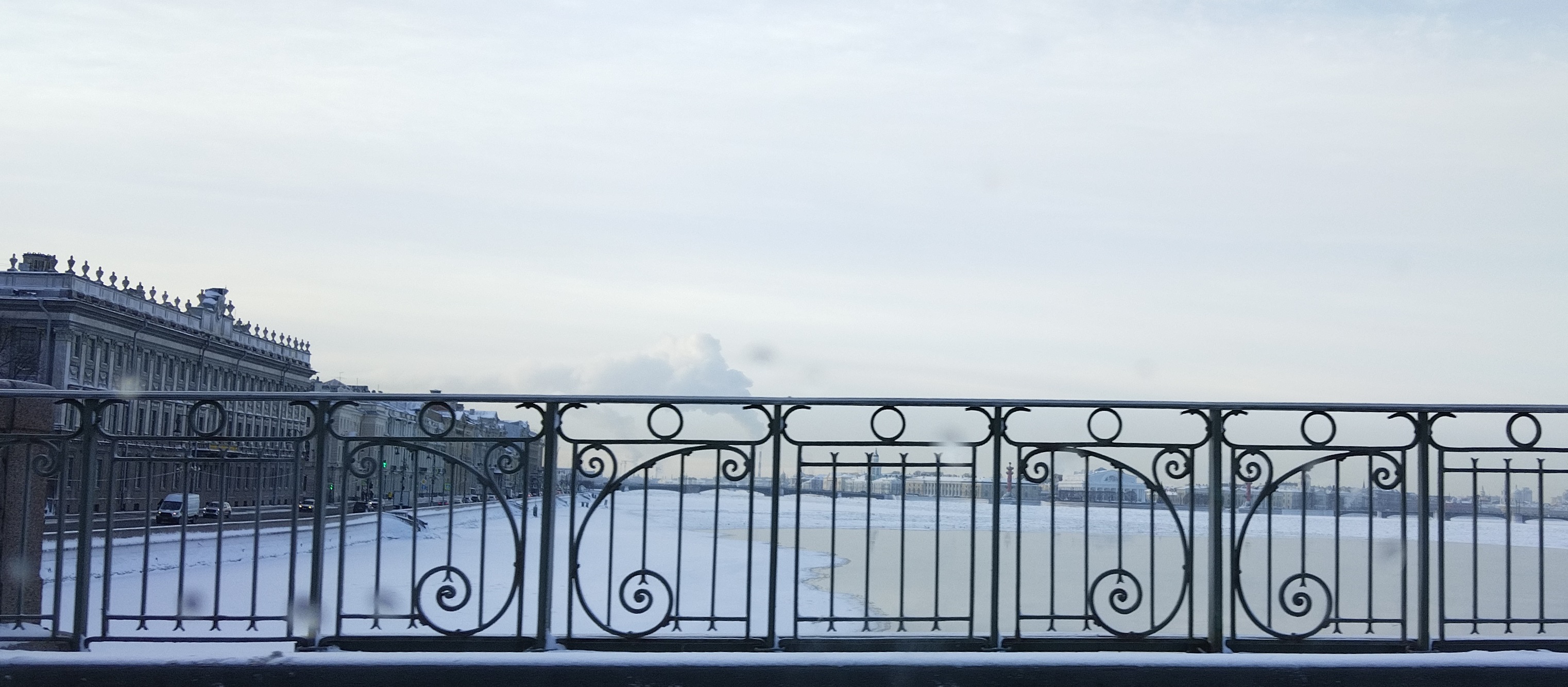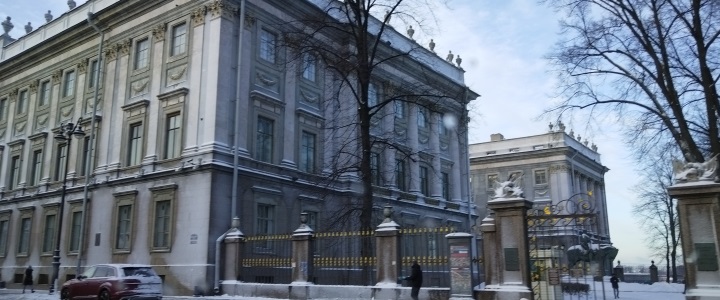he Marble Palace is a unique architectural monument of the second half of the 18th century. Built on the place of the Post Yard of Peter the Great s times, it has become a splendid end of the gala Palace embankment of the Neva.
The construction of the palace, started in 1768, lasted for 17 years and was completed in 1785. The main construction material of the exterior and interior decorations of the building was a natural stone: granite and marble of different colours, that imparted the palace a unique originality and afterwards gave it the name of the Marble Palace.
The Marble Palace amazed contemporaries by its luxury, magnificence of interiors and beauty of sculptural and painterly decorations.
However, the first owner of the palace Grigory Orlov did not see its magnificence. He died in 1783 when the interior decoration of the palace was not completed. Catherine II bought it from Grigory Orlov s heirs and gifted it to her grandson Grand Duke Konstantin Konstantinovich on the occasion of his marriage to Princess Julianna Henrietta of Sachsen-Coburg-Saalfeld. She accepted Eastern Christianity and got the name of Anna Fyodorovna.
Then in 1832 Emperor Nicholas I granted the Marble Palace to his second son Grand Duke Konstantin Nikolaevich. The most thorough reconstruction work connected with the name of Alexander Brullov lasted from 1848 to 1851. He did not have a choice: to restore or do anew the palace. In spite of continual reconstruction works the building had been a dangerous structure; preserved decoration including door canvases and parquet floor had been dismantled by 1830. The architect chose to preserve the external face of the palace, whilst redecorating the interioirs of the state halls of the Marble Palace, at that he preferred late Renaissance, Gothic, rococo and classicism.
In 1888 the palace was inherited by the son of the Grand Duke Konstantin Nikolaevich the Grand Duke Konstantin Konstantinovich. In the 1880-90s the English Study, the Gothic Musical Drawing-Room and the Lower Library were made for him on the ground floor. Grand Duke Konstantin Konstantinovich was an accomplished Russian poet, who wrote under the cryptonym K. R., and an excellent translator of Goethe, Schiller and Shakespeare's works.
During his time there the Marble Palace became the centre of cultural life in the capital. Musical evening parties were held in the rooms of the palace. Intellectuals of the capital gathered there, read and discussed the best works by foreign and Russian writers, staged performances in which Konstantin Konstantinovich, his wife Grand Duchess Elizabeth Mavrikeyevna and their children took part.
From 1919 to 1936 the palace was awarded to the Academy of the History of Material Culture. In 1937 a branch of the Central Lenin Museum was opened in the halls of the Marble Palace. This new use led to the loss of the décor in the halls on the first floor. The palace's unique fireplaces and decorative fabrics were destroyed. In the halls the artificial marble was painted over, the murals whited over. The Main Staircase and the Marble Room mainly preserved Rinaldi's original interiors.
The Main Staircase is decorated with grey Ural marble. The stairs are made of dark grey sandstone. Paris' Judgementplafond by the German painter of the 18th century J. Krist is located in the centre of the Main Staircase ceiling.
Stone decoration of the Marble Room amazes by the variety of colours, elegance, richness, perfection of marble's processing, excellent style of its selection and arrangement. Seven marble sorts of Greek, Italian, Ural, Karel and Siberian rocks were used in the decoration of the Marble Room. The room is decorated with bas-reliefs by F. Shubin and M. Kozlovsky and Venus's Triumph plafond by S. Torelli.
A new stage in the life of the Marble Palace began in 1992, when the building was awarded to the Russian Museum.
In 2001 the White (Gothic) Room was opened after restoration. It is fit with modern high-tech equipment for holding conferences, symposia and teleconference bridges.
In 1995 the Ludwig Museum in the Russian Museum permanent exhibition was opened in the Marble Palace. It was donated by famous German collectors Peter and Irene Ludwig and displays works by European, Russian and American artists. The exposition of the Ludwig Museum in the Russian Museum has constantly increased thanks to acquisitions and donations.

